Enter to win a copy of Book 1 & Book 2 in the Newport Vampire Series
Limited Edition of 250 signed-by-the-author hardcover books
Winner receives both books along with custom-made book plates and magnetized bookmarks for the series.
BOOK REVIEWS:
Add book reviews
ABOUT THE SERIES:
The NEWPORT VAMPIRE STORIES SERIES is a contemporary Vampire Story told with a subtle thread of Catholicism running through it.
It is a story about the lengths to which desperation can drive a vampire to possess the one he loves.
For Ciara, who felt unloved and unnoticed in the world all of her life, it’s a story of love and being chosen.
For Darius, it is a story of the power, control and manipulation he developed in his quest for blood, love and loyalty.
Ultimately, Darius must learn to give up up control and manipulation in order to find true love.
Each book can be read separately as each story has a beginning, middle and end. But they are best read in order to follow the full character arcs.
NEWPORT VAMPIRE STORIES SERIES is a different Vampire Series.
❤ Secrets, Lies, Deceit & Desperation
❤ True Love, Need, Sacrifice and Acts of Devotion
❤ Vampiric Obsession, Manipulation & Sabotage
❤ Accidental deaths, Secret Burials, Murder & Kidnapping
❤ Vampires born anew
❤ Being chased by the NY mob
❤ Being investigated by a nosy detective
❤ Being scrutinized by nosy family members
❤ Local Scientist with a blood serum Darius wants
❤ But in the end, it’s about True Love, Family Love and
the human need for Freedom.
ENTER TO WIN:
The form is below to enter the September Books Giveaway. The Rules and Legal stuff is below. I have used red for the important stuff, but please read before entering.
***** ADD NEW MAILERLITE FORM *****
***** CHANGE TECHNICAL STUFF IN LEGAL PARAGRAPHS BELOW *****
Giveaway Rules:
By submitting an entry to the September Hardcover 2 Book Giveaway (the “September Giveaway”), you acknowledge that you have read and agree to be bound by these Official Rules and the decisions of RShannon/ ReadFirstChapter.com, and that you satisfy all eligibility requirements.
The SEPTEMBER GIVEAWAY is open to all humans age 21 or older with a USA mailing address where the books will be sent. Employees of RSHANNON or READFIRSTCHAPTER.COM, (the “Sponsor”), its respective parent, subsidiaries, affiliates, advertising and promotion agencies, distributors, merchants involved with this Sweepstakes, and their immediate family members and/or those living in the same household of each are not eligible to enter or win. Sweepstakes governed by United States law. Sweepstakes is subject to all applicable federal, state and local laws and regulations. Void where prohibited by law. No purchase necessary to enter or win. A purchase will not improve your chances of winning.
HOW TO ENTER:
To enter the Sweepstakes, click below and sign up with your first name and email. Follow all onscreen instructions to verify your email and submit the online entry form (“Primary Entry”). All entries must be received by September 30, 2024. (“Sweepstakes Entry Period”). Online entrants subject to all notices posted online including but not limited to Sponsor’s privacy policy.
PRIZES & APPROXIMATE RETAIL VALUES (“ARV”):
Maximum ARV of all prizes: $30. Prize includes: Author signed hardcvoer books entitled Darius – A Vampire Story and Repossession of Ciara, both books authored by R Shannon, along with 4 magnetized stylized bookmarks. They will be mailed using USPS.com.
If winner is unable to receive the book or fails to offer mailing address within the United States, the prize will be forfeited, and an alternate winner may be selected in accordance with these Official Rules from among the remaining eligible entries for that prize. Prizes may not be transferred or assigned except by Sponsor.
ODDS:
Odds of winning depend on number of eligible entries received during the Sweepstakes Entry Period. The entry invitation will appear on this website all month long and it will also be posted several times to social media.
THE LEGAL STUFF:
Winners will be selected in a random drawing from all eligible entries received. Random drawing will be conducted on or about DATE OF OCTOBER 1st, 2024 by a representative from the Sponsor whose decisions are final. Winners will be notified by email. The winner will be required to complete and return an email confirmation of prize acceptance and a verifiable USPS Mailing address. This verification must be within 7 days of the announcement of the winner. The prize will be delivered within 30 days of receipt of verified USPS postal address.
If a potential winner cannot be contacted by email, or receive the prize for any reason, or he/she is not in compliance with these Official Rules, the prize will be forfeited and will be awarded to an alternate winner.
If a winner is otherwise eligible under these Official Rules, but is nevertheless deemed a minor in his or her state of primary residence, the prize will be awarded in the name of winner’s parent or legal guardian who will be required to execute an affidavit on minor’s behalf. No substitutions are permitted except if prize is unavailable, in which case a prize of equal or greater value will be awarded. Prize is not redeemable for cash and non-assignable and non-transferable except to a surviving spouse.
Winner is responsible for all federal, state, local sales and income taxes. Any other incidental expenses on prize not specified herein are the sole responsibility of winner. Entry and acceptance of prize constitute permission to use winner’s name, prize won, hometown and likeness for online posting and promotional purposes without further compensation, except where prohibited by law.
Limit: one prize per household. Prize is guaranteed to be awarded.
Participating entrants agree to these Official Rules and the decisions of the Sponsor, and release, defend and hold harmless the Sponsor and its affiliated companies, including all social media platforms on which this giveaway will be advertised, and all other businesses involved in this Sweepstakes, as well as the employees, officers, directors and agents of each, from all claims and liability relating to their participation, acceptance and use or misuse of prize. Winner assumes all liability for any injury or damage caused or claimed to be caused, by participation in this Sweepstakes or use or redemption of prize. Sponsor is not responsible for any typographical or other error in the printing of the offer, administration of the Sweepstakes or in the announcement of the prize.
Winner acknowledges the Sponsor and all other businesses concerned with this Sweepstakes and their agents do not make, nor are in any manner responsible for any warranty, representations, expressed or implied, in fact or in law, relative the quality, conditions, fitness or merchantability of any aspect of prize.
In the event of a dispute over the identity of an online entrant, entry will be deemed submitted by the “Authorized Account Holder” of the e-mail address submitted at time of entry. Authorized Account Holder means the natural person who is assigned to an e-mail address by an Internet access provider, online service provider, or other organization that is responsible for assigning e-mail addresses for the domain associated with the submitted e-mail address.
Failure to comply with these Official Rules may result in disqualification from the Sweepstakes. Sponsor reserves the right to permanently disqualify from any sweepstakes it sponsors any person it believes has intentionally violated these Official Rules and cancel the Sweepstakes if it becomes technically corrupted.
Legal Warning: ANY ATTEMPT BY AN individual, whether or not an ENTRANT, TO DELIBERATELY DAMAGE, destroy, tamper or vandalize this WEB SITE OR interfere with the OPERATION OF THE SWEEPSTAKES, IS A VIOLATION OF CRIMINAL AND CIVIL LAWS and SPONSOR RESERVES THE RIGHT TO SEEK DAMAGES and diligently pursue all remedies against ANY SUCH individual TO THE FULLEST EXTENT PERMITTED BY LAW.



 They present the movies on their channel and they begin with a short introduction and quick discussion about the movie and who plays what parts.
They present the movies on their channel and they begin with a short introduction and quick discussion about the movie and who plays what parts.
 The story for anyone that doesn't know it is that an artist paints a picture of Dorian Gray while he is in his youth. He wonders out loud that wouldn't it be great if the picture could age and he could stay young, instead of the other way around. Well, that's what happens.
The story for anyone that doesn't know it is that an artist paints a picture of Dorian Gray while he is in his youth. He wonders out loud that wouldn't it be great if the picture could age and he could stay young, instead of the other way around. Well, that's what happens.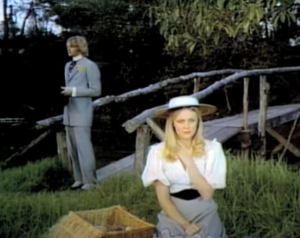 These movies that are shot almost like plays are very helpful in setting a scene for a book. Nothing is ethereal or being described with shooting camera angles or other MTV style movie effects.
These movies that are shot almost like plays are very helpful in setting a scene for a book. Nothing is ethereal or being described with shooting camera angles or other MTV style movie effects.
 Dark Shadows Reddit Group
Dark Shadows Reddit Group
 I tried so many times to understand Google Analytics but I never go much further than creating an Analytics property, putting the code onto my website and being able to pull up some information in Google Analytics. Sounds good, right? No, it wasn't.
I tried so many times to understand Google Analytics but I never go much further than creating an Analytics property, putting the code onto my website and being able to pull up some information in Google Analytics. Sounds good, right? No, it wasn't.

 I do still use Google Analytics, but after isolating the specific links I need, I no longer use the menu along the left side of google analytics. Just the sight of it is enough to give me a headache. I simply click on the links that I set up so I can get a few bits of specific data information as described below:
I do still use Google Analytics, but after isolating the specific links I need, I no longer use the menu along the left side of google analytics. Just the sight of it is enough to give me a headache. I simply click on the links that I set up so I can get a few bits of specific data information as described below: TIME OUT FOR A SECOND: Before I go into any details, be aware that I shortened all of these google analytics by copying the address bar, going to tinyurl.com, using an alias of RTC which stands for Read First Chapter, and creating a shortened link.
TIME OUT FOR A SECOND: Before I go into any details, be aware that I shortened all of these google analytics by copying the address bar, going to tinyurl.com, using an alias of RTC which stands for Read First Chapter, and creating a shortened link. Traffic Acquisition: This page shows me which social media website is sending me the most traffic. This helps a lot because I don't do that well on social media. In other words, I have very few followers and the quest to get more leaves me cold. I don't particularly like social media, I think aside from posting business ads, it's kind of a waste of time -- with a few exceptions.
Traffic Acquisition: This page shows me which social media website is sending me the most traffic. This helps a lot because I don't do that well on social media. In other words, I have very few followers and the quest to get more leaves me cold. I don't particularly like social media, I think aside from posting business ads, it's kind of a waste of time -- with a few exceptions. I will use this system to take a snapshot, a five to ten minute look at the end of each week to see what is going on and to make sure that all of my bases are covered. This sounds easier than it is because a self publishing business is like a one man band. You're responsible for everything surrounding the production, marketing and sales of the books.
I will use this system to take a snapshot, a five to ten minute look at the end of each week to see what is going on and to make sure that all of my bases are covered. This sounds easier than it is because a self publishing business is like a one man band. You're responsible for everything surrounding the production, marketing and sales of the books. Rosemary and her husband move into an apartment in NYC next to an eccentric but interesting old couple who are a big pushy. They are friendly enough and Rosemary agrees to meet them for dinner with her husband Guy. Guy is an actor and he is struggling. He lost a part to another actor and is disappointed but tries to remain upbeat.
Rosemary and her husband move into an apartment in NYC next to an eccentric but interesting old couple who are a big pushy. They are friendly enough and Rosemary agrees to meet them for dinner with her husband Guy. Guy is an actor and he is struggling. He lost a part to another actor and is disappointed but tries to remain upbeat.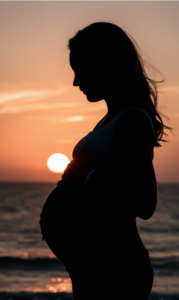 Minnie makes a fresh vitamin filled drink for Rosemary to consume everyday. Instead of gaining weight, she loses weight. Sapirstein tells her it's normal. Just keep drinking the herb drinks and things will be fine.
Minnie makes a fresh vitamin filled drink for Rosemary to consume everyday. Instead of gaining weight, she loses weight. Sapirstein tells her it's normal. Just keep drinking the herb drinks and things will be fine. She hears a crying baby through the paper-thin walls in the apartment and even though she is told it's a new tenant who has a baby, she believes it is her baby. She enters Minni's apartment and sees the whole coven of satanists around a bassinette. THereis an upside down cross hanging off the front of it. She peaks inside and is horrified by what she sees.
She hears a crying baby through the paper-thin walls in the apartment and even though she is told it's a new tenant who has a baby, she believes it is her baby. She enters Minni's apartment and sees the whole coven of satanists around a bassinette. THereis an upside down cross hanging off the front of it. She peaks inside and is horrified by what she sees.
 Ruth Gordon plays Minnie, the neighbor, and as usual, her character is hysterical. She appeared funny, quirky and harmless in the beginning of the movie. This added to hiding what was really going on.
Ruth Gordon plays Minnie, the neighbor, and as usual, her character is hysterical. She appeared funny, quirky and harmless in the beginning of the movie. This added to hiding what was really going on.



 All book authors want readers! Many readers are curious -- either before reading your book or after -- about who wrote the book. Many of them only want to see what you look like or where you live.
All book authors want readers! Many readers are curious -- either before reading your book or after -- about who wrote the book. Many of them only want to see what you look like or where you live. You will need a bio with a picture. The picture will be reduced to an icon or avatar size, so be sure to have one that is crisp and clear and mainly of your face and shoulders. Otherwise, it won't look professional.
You will need a bio with a picture. The picture will be reduced to an icon or avatar size, so be sure to have one that is crisp and clear and mainly of your face and shoulders. Otherwise, it won't look professional. If you only have one or two books and aren't ready to build a full website, think of the Amazon Central Author page as a website. Besides adding your avatar picture, Amazon will pull in all of your books onto the one page. Each viewer is given an opportunity to click on the FOLLOW button. So if they really like your work, they can sign up to follow you and then will get notice of any new books released by you. So there is this little bit of marketing built into the Author Central page.
If you only have one or two books and aren't ready to build a full website, think of the Amazon Central Author page as a website. Besides adding your avatar picture, Amazon will pull in all of your books onto the one page. Each viewer is given an opportunity to click on the FOLLOW button. So if they really like your work, they can sign up to follow you and then will get notice of any new books released by you. So there is this little bit of marketing built into the Author Central page.


 Turning the viewing of a movie into a writing exercise will change the way in which you watch the movie. For your spouse, it won't change anything. Most people love to go into the story not knowing anything. There are some who any hint of a spoiler will ruin the movie for them. You may be one of them now!
Turning the viewing of a movie into a writing exercise will change the way in which you watch the movie. For your spouse, it won't change anything. Most people love to go into the story not knowing anything. There are some who any hint of a spoiler will ruin the movie for them. You may be one of them now! Find a summary of the movie on Wikipedia. Most movies have a page about them and it gives all the technical information about who wrote the original story, the producer, director, stars, etc. But there is a section entitled PLOT. This is where the plot is laid out for you.
Find a summary of the movie on Wikipedia. Most movies have a page about them and it gives all the technical information about who wrote the original story, the producer, director, stars, etc. But there is a section entitled PLOT. This is where the plot is laid out for you. To be honest, most plots are too long to even remember or put together with one reading. I can usually follow the plotline for about the first four paragraphs. After that, I can't remember who is who but it doesn't matter. As long as you have a gist of an idea of what will take place, it allows you to watch for it.
To be honest, most plots are too long to even remember or put together with one reading. I can usually follow the plotline for about the first four paragraphs. After that, I can't remember who is who but it doesn't matter. As long as you have a gist of an idea of what will take place, it allows you to watch for it.

 THIRD: Classic films relied more on dialogue, staging and backdrops to tell the story. This is the richness that I find most helpful to see and learn from as an author. Modern storytelling is worried about the 3-second attention span. Older movies assumed the audience was grown up and could sit still and pay attention for a few minutes without intense stimulation.
THIRD: Classic films relied more on dialogue, staging and backdrops to tell the story. This is the richness that I find most helpful to see and learn from as an author. Modern storytelling is worried about the 3-second attention span. Older movies assumed the audience was grown up and could sit still and pay attention for a few minutes without intense stimulation. FIFTH: Newer movies have upgraded post production technology and CGI, so they are now focused on movie effects, jump scares and gore shocks. Although many of you may enjoy this type of thing, it really doesn't have much to teach a new author.
FIFTH: Newer movies have upgraded post production technology and CGI, so they are now focused on movie effects, jump scares and gore shocks. Although many of you may enjoy this type of thing, it really doesn't have much to teach a new author. Everyone has to find their own subgenres whether it be old gothic movies or old mystery movies. But a good place to start is at Wikipedia. Below are two links to the 1960s and 1970s in film. Movies made in these years would fall into the categories I mentioned above.
Everyone has to find their own subgenres whether it be old gothic movies or old mystery movies. But a good place to start is at Wikipedia. Below are two links to the 1960s and 1970s in film. Movies made in these years would fall into the categories I mentioned above. If you are watching the movie on a computer, take a screen shot of a scene and then set up an imaginary happenstance that occurs in this setting. Describe the setting in words, attempting to capture the essence of what you saw on film. Doing this a few times will help you get better and better in describing backgrounds and scene settings.
If you are watching the movie on a computer, take a screen shot of a scene and then set up an imaginary happenstance that occurs in this setting. Describe the setting in words, attempting to capture the essence of what you saw on film. Doing this a few times will help you get better and better in describing backgrounds and scene settings.

 In this blog post and video, which I will post below, I'm going to go over all the steps you should take in preparing to contact an artist at Fiverr to purchase an eBook cover. These tips will be helpful to both those who have money to publish but no time and also those on a shoestring budget.
In this blog post and video, which I will post below, I'm going to go over all the steps you should take in preparing to contact an artist at Fiverr to purchase an eBook cover. These tips will be helpful to both those who have money to publish but no time and also those on a shoestring budget. I'll use my own book entitled
I'll use my own book entitled 
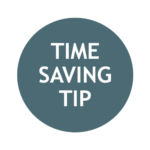 Another tip I can pass on is that if you choose a classic as a guiding light book, or a popular book that has been professionally published, by analyzing those books and seeing where they are positioned, in a way you are getting the advantage of the marketing department that is behind this bestseller. The publishing companies have a marketing department and they work all day positioning books. By watching those bestsellers, you can profit, so to speak, from all of their education and know-how.
Another tip I can pass on is that if you choose a classic as a guiding light book, or a popular book that has been professionally published, by analyzing those books and seeing where they are positioned, in a way you are getting the advantage of the marketing department that is behind this bestseller. The publishing companies have a marketing department and they work all day positioning books. By watching those bestsellers, you can profit, so to speak, from all of their education and know-how.

 Try to put all the pictures of the books on one page. You can do this in Word. If this seems like too much work, you can save the inspirational covers and keep them all in a folder so you can upload them to your fiverr Request.
Try to put all the pictures of the books on one page. You can do this in Word. If this seems like too much work, you can save the inspirational covers and keep them all in a folder so you can upload them to your fiverr Request.




 Magical Realism is a newer subgenre too. Magical realism are low fantasy stories as they are rooted in our own world with only one or two fantastical elements -- usually at least one form of magic. They take place in an often-recognizable place and the contemporary world.
Magical Realism is a newer subgenre too. Magical realism are low fantasy stories as they are rooted in our own world with only one or two fantastical elements -- usually at least one form of magic. They take place in an often-recognizable place and the contemporary world.

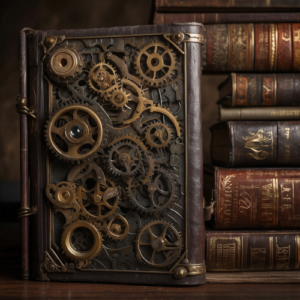

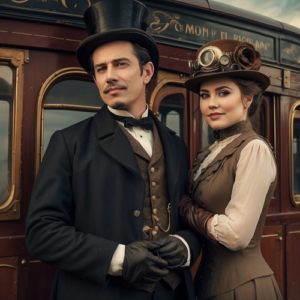 A new subgenre for those who like the steampunk aesthetic and/or urban fantasy, Hope Punk Fantasy contains these elements but without all the hopelessness or grim outlook. The story is more hope and/or happiness based.
A new subgenre for those who like the steampunk aesthetic and/or urban fantasy, Hope Punk Fantasy contains these elements but without all the hopelessness or grim outlook. The story is more hope and/or happiness based.